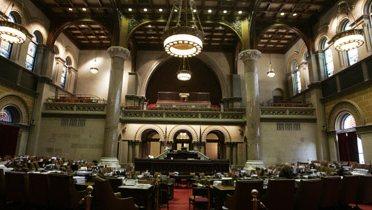In January, 37 governors, many of them new, will take office facing daunting challenges, including many immediate needs for which there is precious little time or money to meet. But at the same time, they have an opportunity to lead their states, and the nation, into the next economy, which must be driven by exports, powered by low carbon, fueled by innovation, rich with opportunity. An economy with those characteristics will also be metropolitan-led.
Leadership at the state level will be crucial, as the political environment in Washington, DC is very likely to produce little more than partisanship and rancor. We must instead rely on the kind of innovation at the state level that has so often propelled our federalist system.
Deeper budget cuts and more public sector layoffs will not re-balance and re-start our economy. Only wise, strategic investment does that. States should, therefore, do three things to revive their state economies and lay the groundwork for future prosperity:
1) Invest in new ways to support the assets that drive the next economy. The next economy will be created through smart public and private interventions around the assets that matter: innovation, human capital, infrastructure and quality of place. Making these investments requires significant policy reforms because current policies are out of synch with both the changing structure and metropolitan geography of the economy. Thus, states will likely need a new network of market-oriented, private-sector-leveraging, performance-driven institutions. These investments and institutions do not necessarily require new public resources, but they do demand that existing dollars be spent in a sharper, more targeted, metro-aware fashion.
2) Cut to invest to jumpstart the transition to the next economy. At this point in the state fiscal crisis, the simple cuts and program reorganizations have been made already. Now, new or incumbent governors have to make some tough, long-delayed decisions. This includes shifting money out of legacy programs that lack accountability, do not focus on metros, or are not oriented to the next economy, and using it to support the assets that matter, such as education, innovation, and infrastructure. Governors may also need to turn to voters for new dedicated taxes or other new sources of state revenue, validated by voter referenda.
3) Leverage investments through smart metropolitan strategies. The benefits of state investments are amplified when they are aligned with the specific advantages of particular metropolitan areas, whether that is a group of interconnected firms in a particular economic sector, or strength in fast-growing service exports, or globally powerful research institutions or community colleges that develop customized job training. States can provide rich, comparable data sets to help metropolitan areas quickly understand market strengths. They can provide small investments in regional capacity, such as cluster grants. Perhaps most critically, states can break out of agency silos that no longer match economic or geographic imperatives and create cross-agency teams that focus on delivering what regions say they need to succeed. None of these efforts are especially expensive: most of them aim to use existing resources in a more targeted and efficient way.
While the current political climate in Washington makes major reforms difficult there are some tasks that the federal government must take to help states and metropolitan areas move forward in the next economy. The federal government must modernize the tax code to stop encouraging consumption and instead fostering production. It should commit to new investments in transportation. And it could reprise a familiar bargain with states and metros: more flexibility to experiment in return for stricter accountability standards.
The next decade will be one of the most disruptive in American history, given broader trends of global restructuring, demographic transformation, low carbon imperatives and technological possibilities. For political, fiscal, and structural reasons, neither metros, nor states, nor Washington can rise to the complexities of the moment by themselves. But for these same political, fiscal and structural reasons, the states are best positioned to take the lead in bringing the nation into the next economy.
“The States Step Up” is the first in a series of policy innovation briefs that will be coming from the Metropolitan Policy Program in the months ahead. Future briefs will provide detailed recommendations on how states can wisely and cost-effectively support regional industry clusters; bolster exports; devise new approaches to infrastructure spending; promote advanced manufacturing; connect higher education and workforce development; repurpose urban land to spark an economic revival; and overhaul their patchwork of local governments. Over time, the series will address longer-term initiatives, highlight policy innovations that a particular state or handful of states have pioneered and that other states should endeavor to replicate, and explore ways that federal and state governments can coordinate their efforts to advance the next economy.











